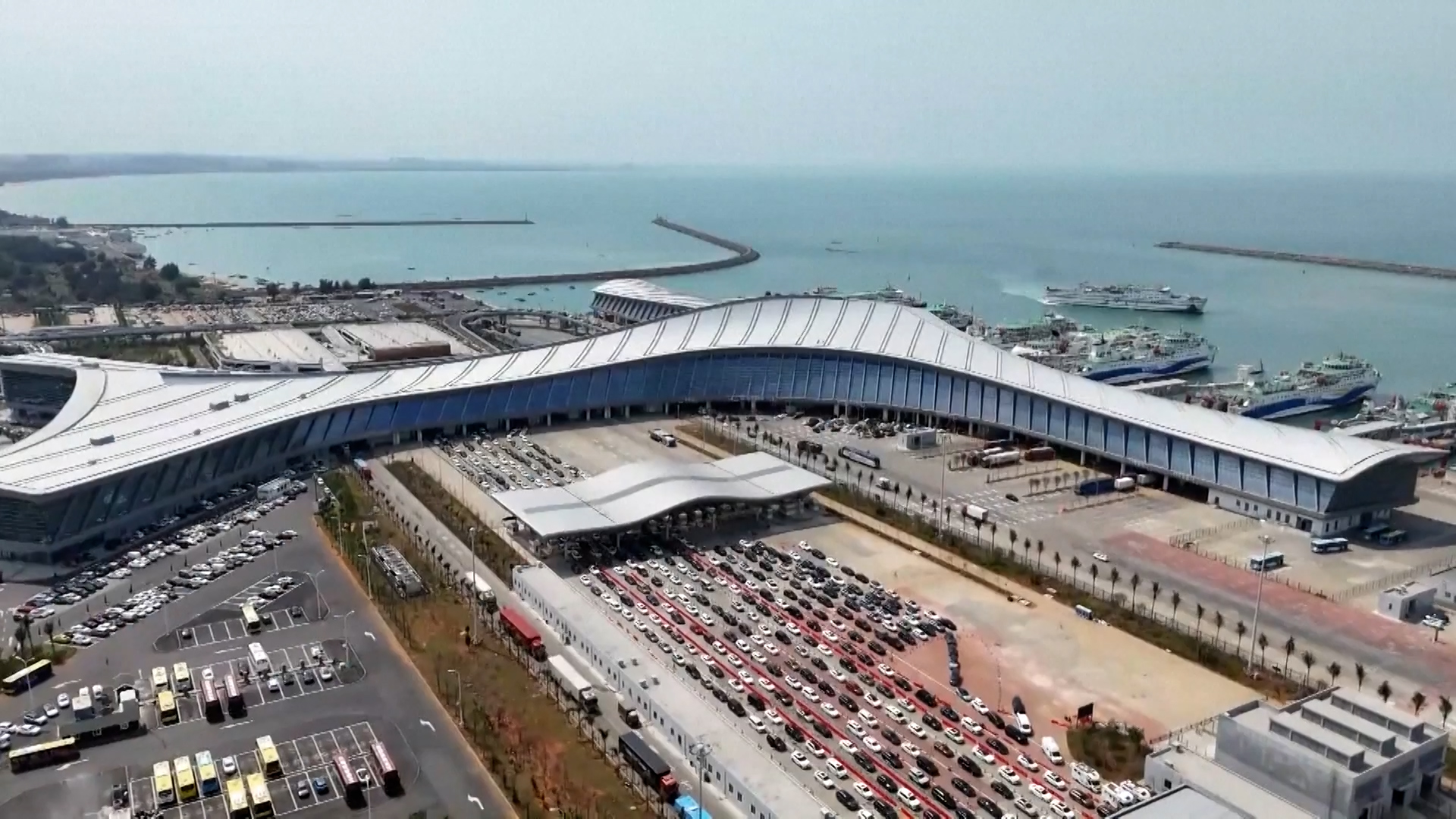Xi Visits Southeast Asia; China-Latin America Relations; US Investigates Semiconductor Imports; Shenzhen's Robotic Sector Growth
Strengthening Ties with Southeast Asia
During President Xi Jinping's recent visit to Vietnam, China's strategic approach was reflected in his attendance at the Sino-Vietnam Railway Cooperation Mechanism Launch Ceremony. This move underscores China's commitment to deepening its strategic economic ties with Vietnam through infrastructure development, which has been a cornerstone of its foreign policy. By maintaining its position as Vietnam's largest trade partner, China is solidifying its influence in the region, aiming to create a model of transnational cooperation (The Paper).
In this event, both governments agreed on key agreements regarding railway and highway cooperation, highlighting their shared goals for the future. The sources also express optimism about the cooperation, indicating that these efforts are expected to have a broad regional and global impact by enhancing connectivity and trade routes (Xinhua).
The Significance of China-Malaysia Relations
The coverage from Xinhua emphasizes the historical and cultural ties between China and Malaysia, renewed through President Xi's visit to Kuala Lumpur. The narrative is rich in cultural exchanges, showcasing the deep-rooted historical ties that go beyond mere economic interactions. It highlights the contributions of the Chinese diaspora in Malaysia, portraying them as cultural and economic bridges and reinforcing their role in shaping bilateral ties.
The publication suggests that this relationship is built on mutual respect and shared historical narratives, particularly emphasizing educational collaborations such as the establishment of Chinese language programs in Malaysian universities. These exchanges are poised to foster further cultural integration and mutual understanding, enhancing the strategic partnership between the two nations.
Countering the U.S. Narrative in Latin America
The narrative from Xinhua challenges the U.S. claims about Chinese influence in Latin America, specifically regarding the Panama Canal. Panamanian President Murillo's strong rebuttal against allegations of Chinese interference suggests a broader geopolitical maneuver to maintain and protect China's reputation in the region. This highlights China’s diplomatic efforts to maintain strategic influence while countering American narratives perceived as baseless.
The strategic support from Latin American leaders underscores the region's alignment with China, viewing it not as an adversarial force but as a partner in infrastructure and economic initiatives. This relationship dynamic is pivotal as it pushes back against U.S. hegemony in the Western Hemisphere.
U.S.-China Trade Tensions: The Semiconductor Focus
The United Daily News reports on the ongoing U.S. investigation into semiconductor imports for national security, indicating tightening controls and potential tariffs on these high-tech products. This comes amidst a broader context of trade conflicts where the U.S. aims to bolster its technological capabilities against Chinese advancements. The narratives suggest a high degree of geopolitical tension, with semiconductors being a critical flashpoint in U.S.-China relations.
This geopolitical rivalry underscores the increasing importance of technological sovereignty, highlighting global supply chain vulnerabilities. For the global tech industry, these developments imply potential disruptions and encourage diversifying supply chains to mitigate risks from ongoing U.S.-China trade frictions.
Constructing Narratives Around U.S. Manufacturing
Sina's coverage includes critiques of U.S. manufacturing policies under the Trump administration, capturing sentiments about the impracticalities of bringing manufacturing back to America under current conditions. Former U.S. Treasury Secretary Janet Yellen's comments reinforce the notion that the administration's tariff policies resemble a damaging "self-harm" rather than providing economic solutions.
This perspective reflects a broader skepticism about the U.S.'s protectionist strategies, indicating potential pitfalls of such policies on international trade relations. Analysts emphasize the need for pragmatic approaches that balance national interests with the realities of a globally integrated economy.
Taken together, these stories show the complex interplay of global geopolitics, economics, and strategic influences, with China positioning itself at a forefront role in shaping the 21st-century world order.
China's Global Economic Role
Xinhua reports on China's continuous effort to portray itself as the "world's marketplace and an opportunity for all countries". With recent successful international forums and trade expos, China's narrative pushes against rising protectionism by promoting its open market policies. This effort aligns with China's ambition to present itself as an advocate of global trade, seeking to provide stability and positive energy to world economics amid a turbulent global landscape.
This strategic positioning is crucial, especially in the face of global economic uncertainties. Through initiatives like the Hainan Free Trade Port, China is not only reinforcing its economic resilience but also extending invitations for global partners to engage in high-quality development.
Boosting Domestic Demand and Economic Strategy
Recent remarks by Chinese Premier Li Qiang have brought renewed focus to China's economic strategy, particularly the emphasis on boosting domestic consumption to strengthen the large domestic market cycle. According to Securities Daily, Li emphasized the importance of expanding domestic demand amidst a challenging external environment to counteract impacts on China's foreign trade exports. This initiative aims to harness the potential of China's vast market through greater consumption and internal economic circulation.
The narrative presented by Securities Daily underscores a strategic response to global trade tensions and shifting economic landscapes, spotlighting the central government's commitment to innovation in trade channels, stabilization of foreign trade, and the expansion of diversified markets.
Growth in Shenzhen's Robotics Sector
One of the prominent stories emerging in Shenzhen's technology ecosystem is the growth of the robotics industry. As illustrated by the article from The Paper, Shenzhen's robot manufacturer "Thirteen Tai Bao" is expanding its operations at a significant pace. This growth is driven by a strategic 50% increase in recruitment to meet rising business demands. This expansion is underpinned by the dual foundation of "AI + hardware" which has been pivotal in their success. The company's integrative approach, combining universal robot brains with intelligent robotics solutions, typifies the agility and innovation that have become hallmarks of Shenzhen's tech landscape.
Shenzhen is positioning itself as a magnet for global talent with its comprehensive initiatives. According to The Paper, the "Million Talents to Guangdong" action plan, spearheaded by Guangdong Province, attracts individuals regardless of their geographical origins. This move not only serves Shenzhen's burgeoning tech industry but also aligns with the city's ambitions of internationalization. Companies like Zongqi Robotics are capitalizing on Shenzhen's favorable environment for both innovation and manufacturing, having established a significant base and research capabilities within the city.
The city's open approach to failure and innovation further complements its strategic narrative. Shenzhen's government policies actively support startups through financial incentives, as noted in the article. This support fosters a culture where risk-taking is seen as essential to breakthrough innovation. The local government's emphasis on embracing experimental endeavors and failures as learning platforms encourages continuous development and improvement, making Shenzhen a fertile ground for visionary startups.



